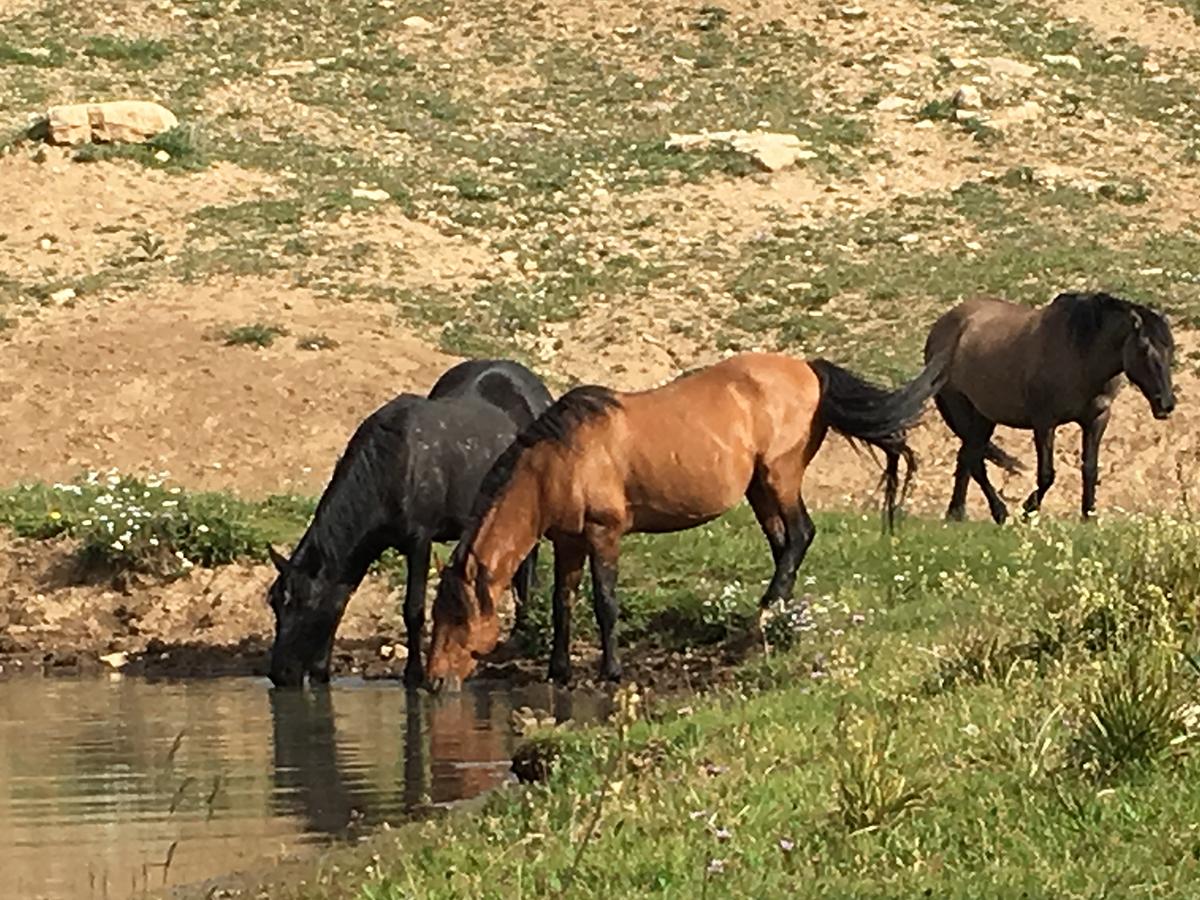Wild Horses and Burros Improve Water Sources on Arid Land
Wild horses and burros in the American West are erroneously blamed for range damage done by rancher-exploited cattle and sheep, and brutally captured by government agencies. Most either spend the rest of their lives incarcerated or are sold to slaughter. The truth is that wild horses and burros improve their rangeland by depositing whole grass seeds in their manure and by digging water source wells utilized by other wild animals.
For decades, the rancher-influenced Bureau of Land Management (BLM) and the United States Forest Service (USFS) have removed wild horses and burros from lands guaranteed to them for their “principle use” by the 1971 Wild Free-Roaming Horses and Burros Act of Congress. Their “excuse” is that the horses and burros are degrading the rangeland, and it has only gotten worse with the continuing drought in the western states. However, it is common knowledge in range management that cows and sheep do the most damage to the range. The negative impact on public lands by wild horses and burros is negligible.
A critical study recently published in Science shows how wild horses and burros dig wells to increase water availability for themselves and other species of animals and plants in arid regions. The lead author, Erick Lundgren, set up wildlife cameras and conducted surveys for three summers in dry areas in Arizona and California.
The study found that the wells dug by the wild equids, using their front hooves, went to depths up to six feet! They often provided the only available water source in the monitored areas during the hottest and driest weeks of summer. The cameras caught a total of 57 animal species who came to the equine-dug wells to drink. Lundgren reports that the wells the equines dig transform into “hotbeds of animal activity.”
The wells that the wild horses and burros dug increased accessible surface water density by up to 14-fold. Also important, the scientists found the equine wells could serve as nurseries for critical trees, as willows and cottonwoods were germinating at some wells. Lundgren said the well-digging behavior fits the definition of “ecosystem engineering,” a phenomenon whereby wild animals alter their environment.
Wild horses and burros belong on our public lands; ranchers’ exploited livestock do not. Please learn more about how you can help by visiting our Wild Horses and Burros campaign.


